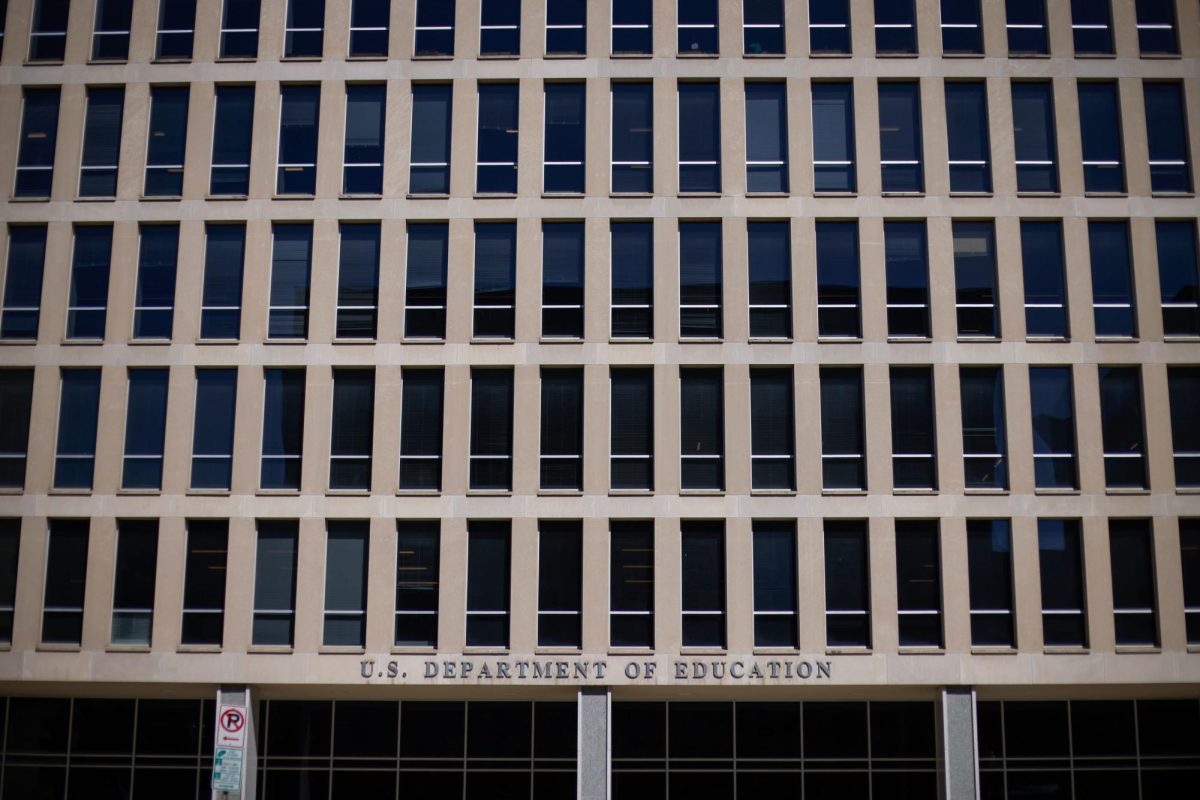GW Hospital CEO Daniel McLean promised residents lampposts, trees and tidiness around the new hospital site between 23rd Street and New Hampshire Avenue at a Foggy Bottom Association meeting Monday night.
He said the hospital construction is on schedule and patients are scheduled to be moved in Aug. 16.
About 100 people attended the meeting in the Melrose Hotel, voicing concerns about what some considered an unsightly hospital loading facing 24th Street, hazardous waste disposal and garbage left by workers at the construction site.
McLean said he decided not to bring promotional material, which he jokingly referred to as “propaganda,” about the new $96 million facility and instead chose to focus on resident questions, which varied from construction timeline to concerns about the building’s size, look and lighting.
Residents complained about potential hazards from construction, such as streetlights that were removed and a hole in the ground near New Hampshire Avenue. Some complained about the design, such as a blank wall that faces Ross Hall.
McLean responded candidly to concerns, saying new lights would be installed before the hospital opens, the garbage would be collected and the hole would be patched. McLean also said he would find out which agency ordered the hospital to have the blank wall, which he said protects liquid oxygen tanks.
McLean said hospital staff needs to come to an agreement with residents of the Foggy Bottom Mews, a row of townhouses across 24th Street from the loading dock, to add more plants to block the view of the dock.
Advisory Neighborhood Commission Dorothy Miller asked whether GW had received a permit to tear down the old hospital, and McLean said he did not know. In an interview Wednesday, University Senior Counsel Charles Barber said the University had not filed for a demolition permit, although he said he expects the University to demolish the old hospital.
“A 50-year-old structure built as a hospital is not really conducive to other uses,” Barber said, adding he expected that the University will probably put one or more structures on the property but he was not aware of any plans.
Ownership of the old hospital will revert to the University once it is vacated, Barber said. Currently University Health Services owns 80 percent of the hospital, and GW owns 20 percent of it. GW owns the land, but UHS runs the hospital.
McLean put to rest resident concerns that GW planned to eliminate its trauma center, saying the new site would have a trauma center with better equipment than the current one.
He also touted the facilities in the new hospital, saying the hospital will have up-to-date equipment and more emergency and operating room space than the current one.
“The smallest operating room in the new hospital is bigger than the
biggest operating room in the old hospital,” McLean said. He also mentioned new operating room simulators where students can operate on a high-tech computerized dummy that responds like a live human. He said this could become one of the selling points for medical students looking at GW.
After the meeting, McLean said the new hospital would offer fewer beds than the old one. According to the hospital Web site, the new hospital will hold 371 beds, 171 less than the current one.
Barber said the beds in the old hospital are not always used efficiently and many are always empty.
“The (new) number more closely approximates what UHS and GW expect will be needed,” Barber said.
But despite the smaller size, McLean said all of the same services will be in place, in many cases with better equipment.
McLean downplayed other concerns like an increase in the number of sirens and a change in traffic patterns, saying the new site would not cause any noticeable change. Currently, ambulances from the south come up 22nd Street and go around Washington Circle before entering the emergency room. There might be more sirens, he said, but only because of the current national security situation.
McLean said he assumes the new hospital will handle hazardous waste in the same way as in the current one does.
McLean said the new hospital is on schedule to be completed June 15. GW will then have a 60-day “shakedown” period until Aug. 16, when patients will arrive.
He said the hospital will be open for tours June 15 through Aug. 16. The move-in period is designed to make sure everything is in working order and that the building is ready to receive patients, McLean said.






